Check The Specs...
NAME: Gordon Stoner
FARM: Stoner Farms
LOCATION: Outlook, Mont.
YEARS NO-TILLING: 22
NO-TILL ACRES: 12,000
CROPS: Durum, green field peas, lentils, flax and corn
Pulse crops have facilitated some massive changes on my farm and to our region as a whole in the last two decades. My wife Bonnie and I are the fourth generation of my family to farm the great glacial plains that make up Northeastern Montana.
Our farm near Outlook, Mont., located just short of the Canadian border, celebrated its centennial in 2009. There were changes throughout that century of farming to be certain, but during our tenure the farm and our region as a whole has gone through a complete transformation.
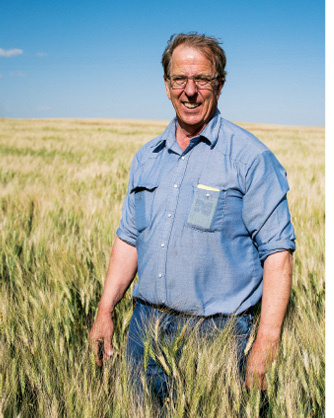
Gordon Stoner
I returned to the farm in 1980, splitting my time between town where I worked as a certified public accountant and the farm where we raised wheat in a traditional summer fallow rotation. Each year about half our acres were growing wheat while the other half were tilled repeatedly all summer to keep weeds in check and hopefully stockpile some moisture for the next crop of wheat.
We were burning through our organic matter with this cropping strategy, mining the valuable material for nitrogen (N) and depleting fields to about 1% organic matter on average. It also wasn’t consistently all that profitable. Marginal rains and temperamental markets made wheat a gamble that only rarely paid off in a big way.
That was true up until about 20 years ago when I — along with other growers in the region — started dabbling in chemical fallow, no-till and eventually pulse crops. Today, when you drive down the road you’re hard pressed to find a fallow field and the countryside is a rich patchwork of diverse crops, such as peas, lentils, flax, durum, corn and more.
The benefits have been wide reaching. A farmer friend of mine likes to joke that pulse crops have brought nothing but problems: you have to build more bins to store all the grain, you have to find another banker to keep all the cash and hire a good accountant to work out how to not give it all to Uncle Sam.
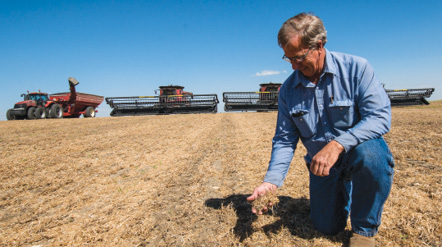
PULSE BENEFITS. There’s not much above ground residue left after harvesting green field peas, but Gordon Stoner reports the legume’s roots hold soil tightly in place in addition to providing some extra nitrogen.
All kidding aside, changes in our farming practices and crops have greatly improved the bottom line for us and other farmers in the region. If you drive around northeastern Montana you see a lot of shiny new equipment and new shops. This can be credited to a great extent to pulse crops and no-till, but also to durum production.
Durum commands a nice premium, as do so many of the crops we now grow. In central Montana they have the Golden Triangle, a region that produces an immense amount of quality wheat. I like to say we live in the Platinum Rectangle as we raise a lot of higher value crops, including durum and pulse crops.
Easing into No-Till
We didn’t jump fully into no-till right off the bat; we eased into it as our rotations and farming strategies slowly adapted. We bought our first Haybuster no-till drill around 1984. We didn’t really use it for true no-till, though. We used it for some recropping and experimentation. Eventually, as we became more comfortable with the equipment, we bought another set of 8000 Haybuster no-till drills and started no-tilling almost all of our crops, but we were still doing cultivation as we experimented to see what worked and what didn’t, so it wasn’t a true no-till system. Our biggest issue and hold up was that there were a lot of years we just couldn’t get down to the moisture like we needed.
The Haybusters were disc drills. We had to push down to 1½-2 inches with our seed to hit moisture, which meant the plants had to fight through all that soil when they germinated. That caused problems.
I tell people if they can’t stand to see weeds in their fields or peas or lentils on the ground at harvest, they shouldn’t grow them…
Around 1990 we started experimenting with chemical fallow, which moved us yet another step toward true no-till. Our motivation was saving money by reducing all those fuel-burning trips over sizeable acres and hopefully retaining a little more moisture.
We didn’t find it to be successful. We were having to fertilize our wheat crop a lot more following chemical fallow as opposed to traditional fallow, plus the cost of herbicides and spraying equipment wear and tear, so the numbers weren’t really coming out the way we hoped.
In the mid to late 1990s we switched to Flexi-Coil drills, which used hoe openers. The hoe opener allowed us to get to depth for the moisture, which was the issue with the disc drills, but also ridged some of the soil up on either side of the seed slot.
The ridging resulted in less soil for our germinating crops to fight through. That made a big difference and no-till was finally a real option for us.
By 2002 we were able to go 100% no-till and we haven’t looked back. This also is when we started continuous cropping all our acres and adding pulse crops to our rotation, including green field peas and lentils.
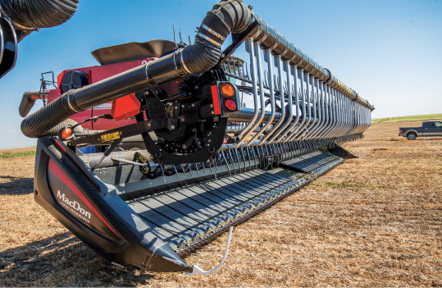
HARVEST STRESS. Pulse crops provide some unique challenges at harvest. They must be taken at precisely the right time to avoid dockage and, because they grow low to the ground, they require specialized equipment like this MacDon draper header with sensors that keep the header hugging the ground.
No-till, pulse crops and continuous cropping were sort of a package deal. When in 100% continuous cropping, moisture becomes a precious commodity. No-till conserves the most moisture and allows us to successfully produce a crop. Instead of yields being hampered by having a crop every year, we’ve found through no-till and an increasingly diversified rotation that yields have gone up without the benefit of additional applied fertilizer.
This goes against our traditional logic. How can more crops build the soil and production instead of mining it more? If you had told me 20 years ago that my Actual Production History (APH) on durum behind a pulse crop in a continuous rotation would be significantly higher than my APH on durum after summer fallow, I wouldn’t have believed it. But that’s exactly what we’ve seen.
This production increase can be credited to the nutrients the pulse crops add to the soil as well as a significant increase in moisture retention. We get 11-13 inches of annual precipitation on an average year. With summer fallow we would conserve 30-60% of that moisture.
Now, with no-till giving us residue to protect the soil and reduce evaporation, along with soil structure that quickly absorbs any water we receive, every single drop of rain falling on our fields goes to the crops. It’s made a huge difference.
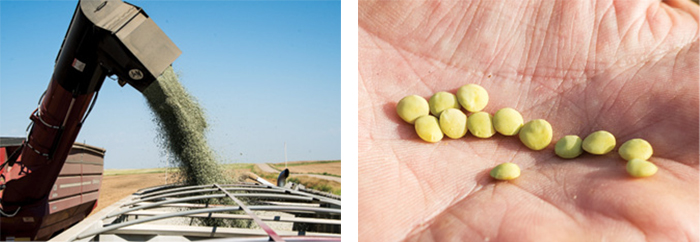
PULSE WIN. Adding high value pulse crops such as green field peas and lentils to his rotation has spread risk, improved profitability and allowed Montana no-tiller Gordon Stoner to go to 100% continuous cropping.
It’s also brought about some very beneficial improvements in our organic matter. Despite raising more crops, the organic matter in our fields now sits around 3% and is rising.
Pulse Problems
There’s no question pulse crops have brought incredible financial benefit to our community, but as a farmer, they’re not without their drawbacks. Pulse crops, especially lentils, grow very close to the ground. This fact is part of what pushed us to going 100% no-till. Less disturbance to the soil meant a generally nice, flat surface to seed into, and more importantly to harvest, as our headers run as close to the ground as possible.
We run MacDon FD75-D FlexDraper heads on each of our three Case IH combines. They have sensors that help keep them snug to the ground to pick up the low growing crops.
Despite minimizing our disturbance with no-till, our granite-filled glacial till soils do still result in some rocks being turned up during planting. It’s necessary to roll all our pulse acres to facilitate a smooth harvest.
We’re still a bit new to pulse crops in the grand scheme of things and we’re still learning their quirks. We often look to our neighbors in Canada who have been in the pulse game a lot longer for advice and a peek at our future.
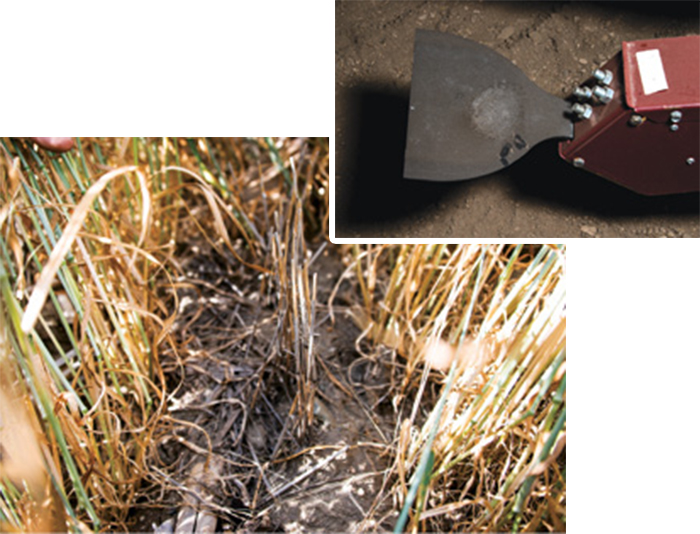
PRECISE STEERING. In addition to RTK, Gordon Stoner uses a sensor system on his Seed Hawk drills that feels its way between rows of stubble, keeping the implement centered between the previous year’s stubble and preventing piles of residue.
One thing they tell us is that if you grow a pea or lentil more than once every 5 years on the same acres, you’re headed for a crash. They just may be right. Pulse crops are prone to disease and we have seen issues with Ascochyta blight, Anthracnose and, most recently, we’re starting to see some white mold issues, which is troubling.
In 2016 we had rain showers every couple days. They were maybe only 1/10th of an inch, but they made conditions right for disease to explode this year. It has definitely made me consider spreading my rotation out a bit further to help control those issues. This year has been difficult, but most years we’re able to scout and use fungicides to keep disease in check.
Scouting is a critical part of pulse production, though, as disease can hit yield severely and impact quality. Quality is critical when it comes time to market pulse crops, as they are more directly a consumer product than wheat or other grain. Variations in quality can result in significant bonuses or dings to profit.
Harvest is very stressful with pulse crops. I tell people if they can’t stand to see weeds in their fields or peas or lentils on the ground at harvest, they shouldn’t grow them. It’s just the nature of the business that you won’t be able to get every single one in the bin.
Timing harvest is tricky and can be challenging. For our green peas the market demands a nice green color. If you leave them in the field too long, they bleach and their value diminishes. Peas and lentils aren’t very forgiving. If you’re not there when they’re ready, you’ll lose them.
The rule with wheat is when the field looks ready you’ll be cutting 10 days later. With green peas, if the field looks ready, you’re already too late. You need to start harvesting when there are still streaks of green in the field.
Peas can be especially cruel. You’ll literally be out greasing the combine in the morning and conditions will be just right with the dew. Then the sun comes out and you’ll hear the peas start rattling and the pods starting to split and you can’t get your machine greased fast enough. Talk about stress!
Weed Shift
The combination of no-till and pulse crops has resulted in a shift in our weed issues. With tillage out of the picture and being significantly limited on herbicide options in our pulse crops, we’ve seen tough weeds like Canada thistle take a run at our fields.
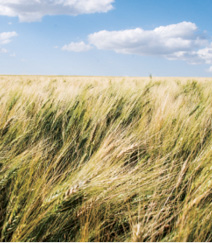
MONEY MAKER. Durum is yet another high value crop in Gordon Stoner’s no-till rotation. Production of the crop in his area has led Stoner to nickname the region the Platinum Rectangle, a play on the Golden Triangle wheat-growing region in western Montana.
When you start combining no-till and pulse crops it becomes even more critical to really stay on top of weed control. Our Case IH Patriot sprayer sees our fields more often than any other piece of equipment. In addition to fungicide applications, we spray herbicide in the fall to pick up late annuals, apply a pre-plant burndown in the spring, do in-crop applications as necessary and use it for some desiccation in the pulse crops. You have to be absolutely vigilant with weeds.
Canada thistle with its massive root system and perennial life cycle is a particularly prickly problem. Tillage managed it fairly well, but in the last 10 years it’s really come on as a problem with no-till.
This year when we’ve driven past our pulse crops we’ve seen a lot of purple blossoms. We’ve seen other weeds adapt to our rotation as well. Our rotation has been fairly tight, usually durum, green field peas, durum and then lentils with flax and corn thrown in the mix here and there. Between disease and weeds, it’s clear we need to spread that rotation out a bit more.
More corn in our rotation may be part of our weed and disease solution. We’ve been experimenting with dryland corn for the last 3 years. Where we’ve planted corn we’ve been able to rotate in residual herbicides, such as Stinger, which has helped us make headway on Canada thistle. But we have to be careful with our rotation as a residual herbicide can damage pulse crops in subsequent years.
In traditional wheat country, corn is a strange sight to see. When you investigate a bit, though, you’ll find that corn is actually a very conservative user of water as compared to wheat. My understanding is it uses about a third as much water to produce a bushel of grain.
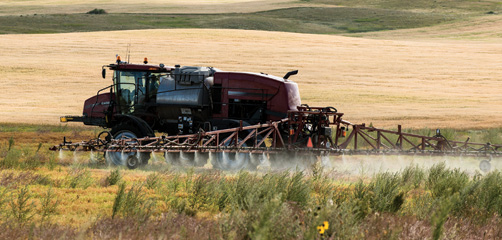
WEED WORK. Gordon Stoner desiccates some lentils prior to harvest, one of many tasks heaped on his sprayer. Between weed control, fungicides and desiccation, the sprayer is the most used piece of equipment on his Outlook, Mont., operation. Stoner says with legumes it’s critical to be proactive in weed control.
In the Midwest where they’re trying to grow 300-bushel corn, they need 30 inches of rain per growing season. Here I’m only hoping to get 70-80 bushels per acre, which I can do with around 12 inches of rain per year. It gets a warm-season grass in the mix and helps us with harvest management, as it’s ready much later than the rest of our crops and can even sit in the field all winter if necessary. I’m not making any money on it at $3 per bushel, but I can make a couple dollars on it at $4 per bushel.
Corn and the rest of our crop diversity have completely changed what harvest looks like on our farm. Harvest used to be 2 weeks of 18-hour days to harvest wheat. Now we harvest for 3 months.
Green peas kick off the harvest season in mid to late July, which lasts 2-3 weeks. We then roll right into lentils for 2-3 weeks and then a month of durum harvest. After that we usually get a little break and then flax and finally corn.
It’s no longer a sprint — it’s a marathon — but it helps us spread out our workload and minimize risk.
Seeding Precision
As we’ve progressed in no-till we’ve made some changes in our seeding equipment. Gone are the heavy Haybuster drills. Now we use two 84-foot Seed Hawk air seeders. These implements have helped us ramp up the accuracy of our no-till seeding.
We farm very large square fields with very wide equipment. Prior to our new Seed Hawk air seeders we had a fair amount of overlap. These drills come with section control so we’re able to shut off 10-foot sections as needed.
The first year we used them I thought for certain we weren’t getting enough seed on the field as we used so much less. However, it turns out I was just losing a lot more seed to overlap than I previously realized.
We now use RTK GPS and auto-steer that helps dial in our accuracy significantly, but with hills and such the seeder still moves around a bit. The Seed Hawks are now equipped with a sensor that sits right in front of each row unit and can steer the drill about 8 inches or so to keep the openers between the previous rows of stubble.
This has really helped the drill work a lot better. With its configuration, if you were hitting the rows you would get a lot of bunches and piles of residue. With the Seed Hawk sensor added, we’re now seeding between the old rows 90-95% of the time.
Seeding between the rows leaves virtually all of our wheat stubble standing. I do all the spraying and used to always be bumping over these little hills and stacks of stubble, which made for an uncomfortable ride and wasn’t ideal for residue management. Now bunched up residue is nonexistent.
More corn in our rotation may be part of our weed and disease solution…
Some guys solve the problem by seeding at an angle to the past year’s crop, but with our square fields I’m not a fan of that. I prefer to seed more precisely and keep working the fields in the same direction.
Seed placement with our Seed Hawk seeder is also very accurate, which is critical when we’re seeding crops such as canola that require very shallow placement. This accuracy is due to the fact that they’re parallel linked hoe drills. The seed opener is tied to the press wheel so each seed opener follows the ground independently, allowing for excellent depth control and uniform seed placement.
The Seed Hawk uses a hoe opener that drops seed out of each side to create about a 2½-inch paired row with around 10 inches spacing between each row pair. A knife opener runs ahead of the seed opener to apply dry fertilizer between the paired row.
For durum we apply a three-way mix of phosphate, sulfur and chloride, plus urea from a separate tank. Pulse crops get the blend only.
Now that we’re 100% continuous cropping and no-tilling, I think seed treatments are an absolute necessity. Pathogens build up in the soils without tillage and it’s critical to support the germinating plant and get it out of the ground as soon as possible, especially with pulse crops.
Early seeding also means crops need that little boost a seed treatment provides. Conventionally, around here you used to start planting around May 1, but now guys are chomping at the bit by April 1. Farms are bigger, we have to cover more ground, and that means getting in the fields sooner. We’re out planting as soon as the frost is out of the ground and the fields are fit. I’ve got pictures of us pulling drills through snowdrifts.
There’s definitely a lot more to think about and keep track of today than there was when we were simply wheat farmers, but I think the work we do gets us a lot more value for the effort. Over the last 20 years we’ve seen our soils improve, our yields increase and our bottom line is looking better than ever.
If we want to maintain those benefits, though, it’s going to take vigilance. We can see weeds and disease threatening our no-till system and our use of financially appealing pulse crops. We’ll have to keep being proactive if we’re going to continue being successful, but I think we’ve proven it’s an effort worth making.







Post a comment
Report Abusive Comment